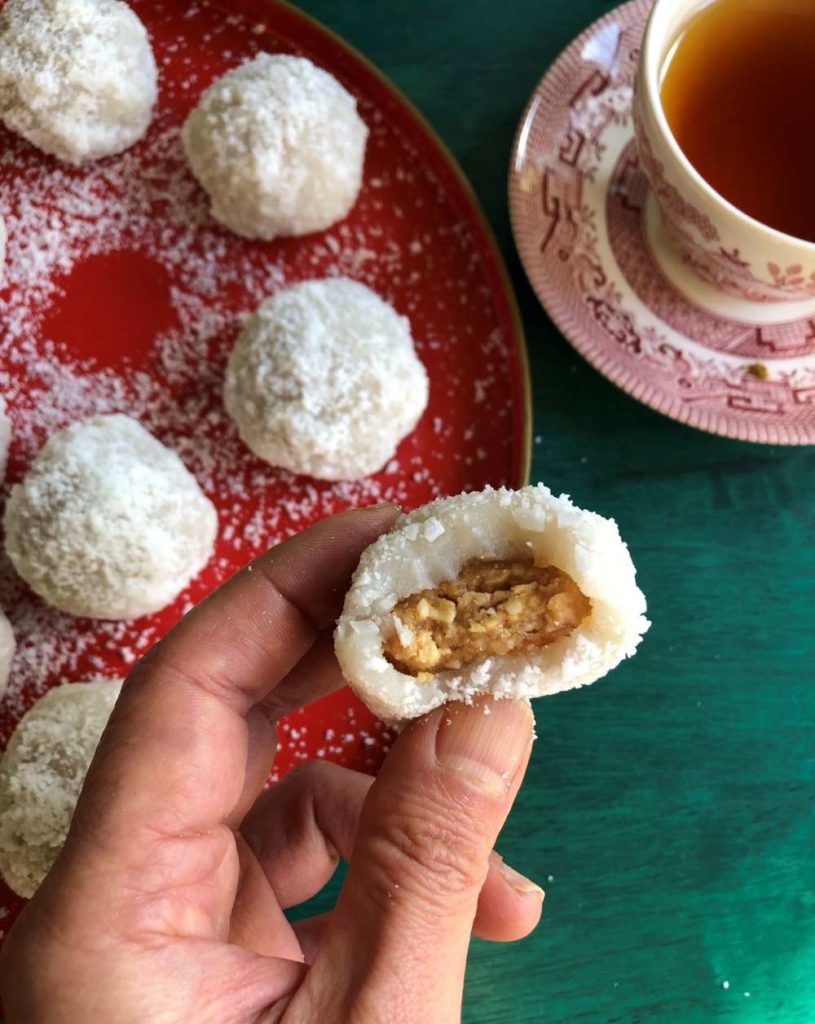
Snowy looking and slightly sweet, these coconut and peanut filled mochi balls are incredibly fun to make and eat. I chose the easygoing recipe from Kristina Cho’s debut cookbook, Mooncakes and Milk Bread, because the mochi balls embody the joy that fills her book. The balls, which are called 糯米糍 – nuòmǐcí in Mandarin and lo mai chi in Cantonese, are popular sweet treats at Chinese bakeries. When I first spotted them many years ago, I thought they were a small version of commercially-made snowball cakes sold at American supermarkets. No way! The southern Chinese coconut and peanut mochi balls are gluten-free, require no baking, and feature a glutinous rice dough (“mochi”) encasing a peanutty filling.
Mooncakes and Milk Bread pays tribute to Chinese baked goods, which may be savory or sweet, enjoyed as an everyday snack or featured at special holidays. Kristina includes recipes gathered from her family (her grandfather owned a Chinese bakery in America) as well as from her own personal research and creativity. I adore that blending of old and new, a passing of the torch. This recipe reflects that dynamic in many ways. It also uses just a handful of readily available ingredients, so 2021’s supply chain issues are not a problem!
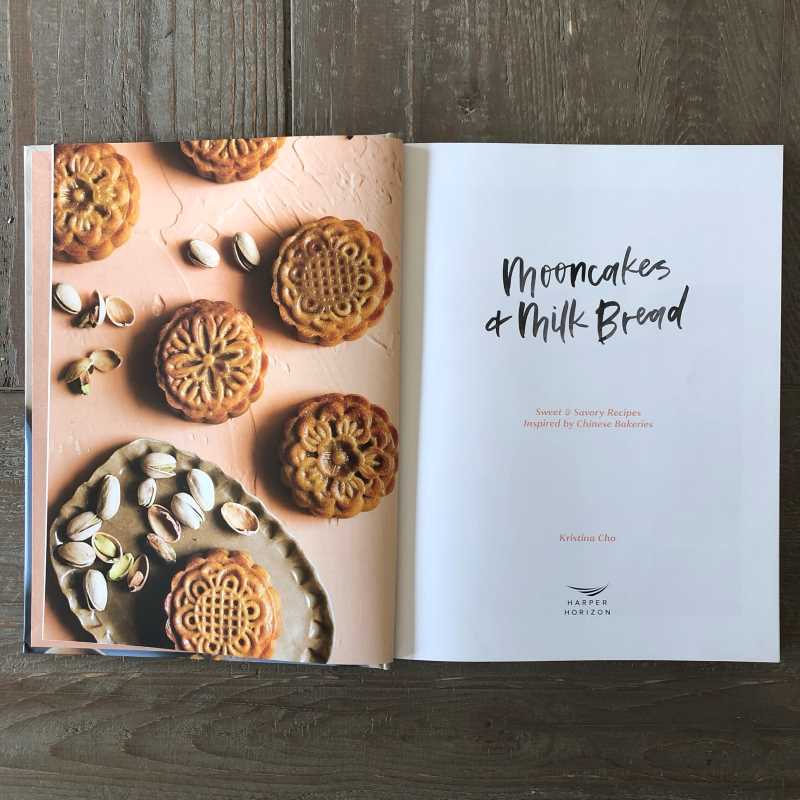
Fuss-Free Mochi Dough Tips
Very old school sticky rice dough was often made by pounding freshly cooked glutinous rice. It was arduous and some Japanese communities still practice that tradition. There are machines that do that work too. My mom recalls a similar process in Vietnam to make sticky rice cakes called bánh giầy. Once she got to America and word spread about Koda Farms’ Mochiko rice flour, a modern shortcut was at hand.
I’ve made mochi dough in the microwave but Kristina’s stovetop method is terrific. Using coconut milk lends flavor and some fat, which keeps the dough soft, even after days of refrigeration! Equipment-wise, a nonstick pot is extremely handy since cooked mochi sticks like glue. To work the dough with ease, employ a silicone baking mat and a metal bench scraper, which you'll see me use in the how-to video below. Without the mat and scraper, you could try plastic wrap and a thin metal spatula. I've not tried those tools myself so let me know if they work for you!
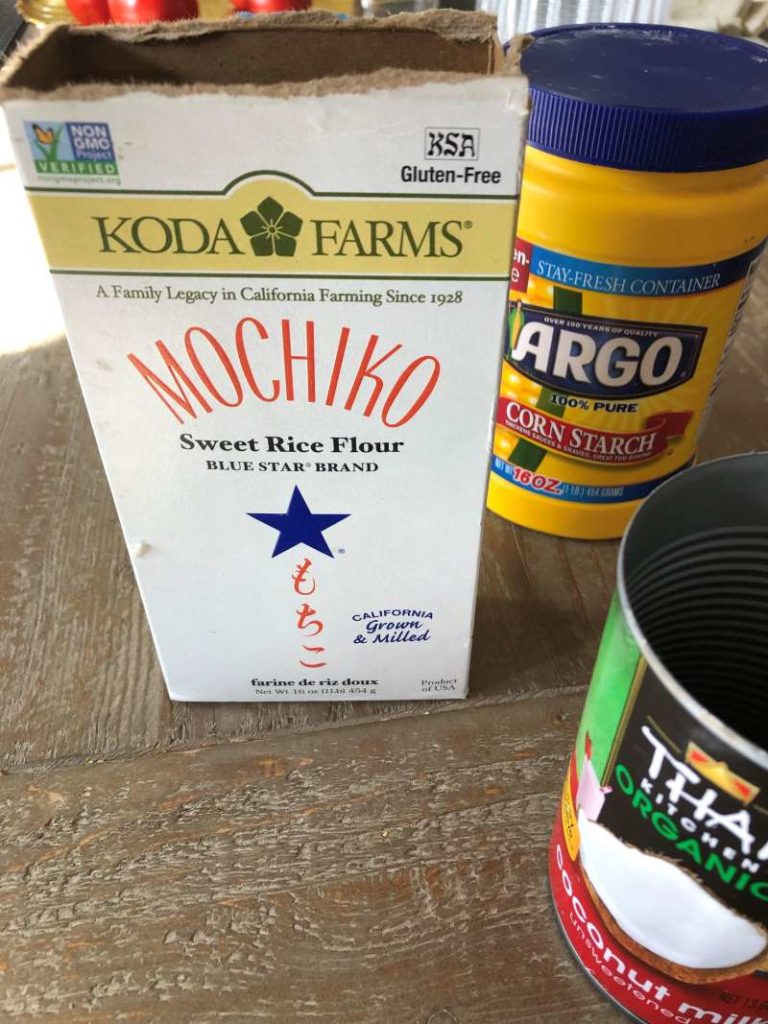
So, back to that flour. Where do you purchase Koda’s flour? Sold at some West Coast supermarkets and most East and Southeast Asian markets, the rice flour is dry milled from California-grown glutinous rice. It’s excellent, and you often see Asian recipes specify it. It’s coarser and drier than wet-milled glutinous rice flour from Asia, such as Erawhan (3 Headed Elephant) brand sold at many Asian markets.
Koda’s Mochiko rice is packaged in an old-fashioned cardboard box so it’s unmistakable. You could try substituting sweet rice flour, such as Bob’s Red Mill (BRM), but in all honesty, it may be easier to find Koda’s flour. I’ve not seen that BRM product sold as much as BRM's regular rice flour — which you CANNOT use for these coconut and peanut mochi balls. When measuring the flour and sugar, use a scale because it (unfortunately) rarely lies. Like all good baking books these days, Kristina offers weight measurements. If you don't have a scale, know that organic cane sugar weighs more than white granulated sugar; for example, 1 cup of white sugar is a scant cup of organic, as shown below.
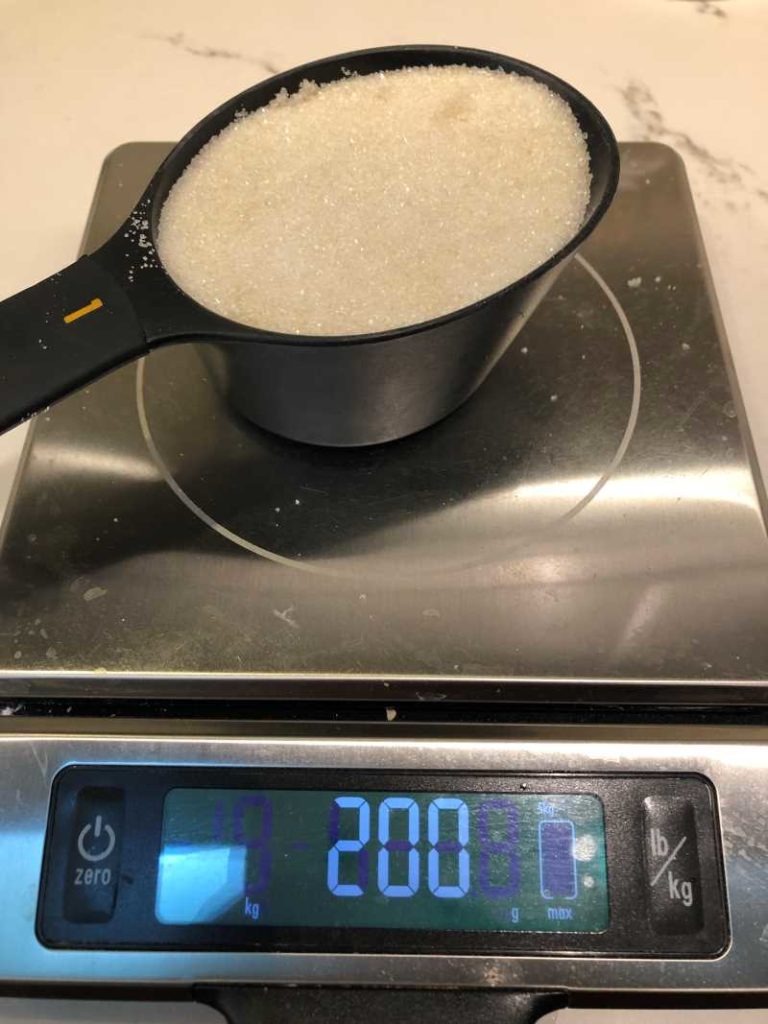
Filling Options
Peanuts, peanut butter, honey and a little salt comprise the filling. You make it in the food processor. I initially used a small processor and put all the ingredients in there but the texture was uneven; I had to reprocess the ingredients in batches. Use a full-size processor, as Kristina suggests. And, chop the peanuts first before adding the other ingredients to lightly bind. You’ll have better control of the filling texture with that slower approach.
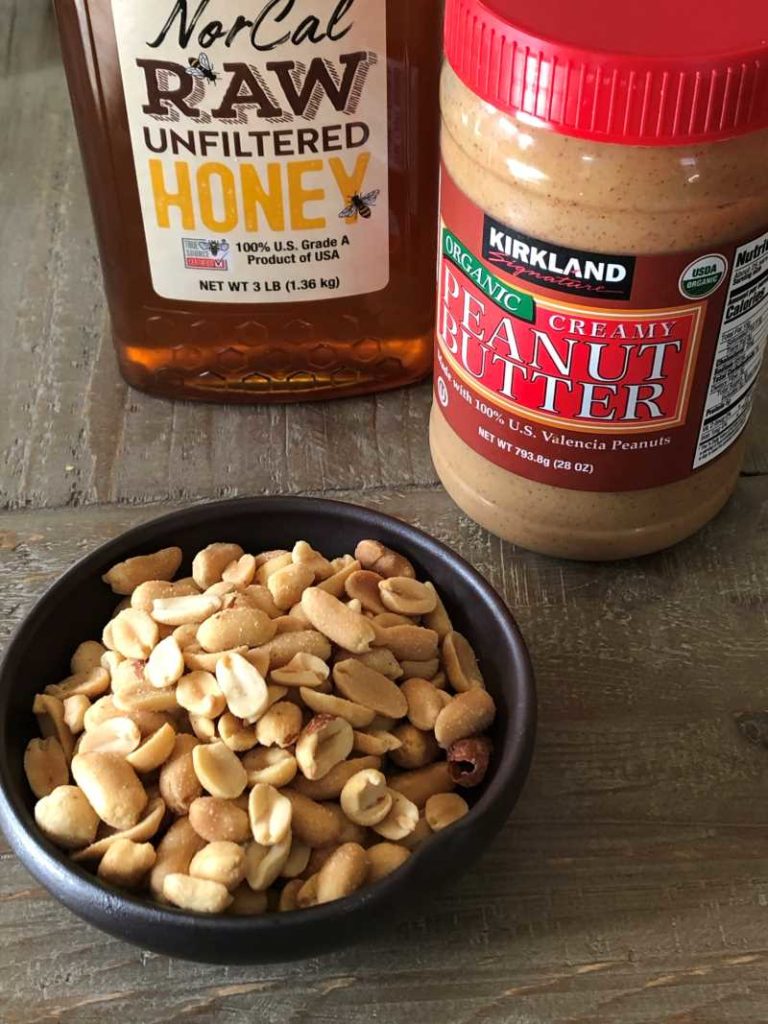
The filling is traditionally left somewhat crumbly but I found that it was easier to form the filling into balls then wrap in the the mochi dough. The workflow was smoother. When I simply made a compact half-moon from the filling, the resulting balls didn't stand up as tall and were not as handsome as when I pre-rolled spheres of filling. Try both approaches like I did in the video below. (As a side note, my favorite peanut butter is made with Valencia peanuts. We purchase ours from Costco but Trader Joe’s has been a good source of it too!)
If peanuts are not for you, try another nut, such as almonds and almond butter, or cashew with cashew butter. Or, maybe sunflower seeds with sunflower seed butter? Elaine, at the China Sichuan Food website, features mango as a filling in her recipe.
Mochi Balls How-To Video
These mochi balls are easy to make but on your first time out, you may need guidance. I made a casual video with a holiday theme to coach you along! (Hit the refresh button if the video doesn’t play, which it should in major browsers.)
The beauty of these coconut and peanut mochi balls is how long they keep. Even though it’s fall going into winter, I refrigerated mine, letting them sit out for about 10 minutes or longer so they soften a touch before eating. You can let them fully return to room temp too. When in a hurry, quarter the ball and it’ll soften faster. Sometimes you want to satisfy that snacky feeling fast.
There are many other recipe gems in Kristina Cho’s new book. I hope you pick up a copy and enjoy its charms and know-how.
More Mochi Flour Recipes
With all that Mochiko sweet rice flour in your kitchen how about also making these recipes:
Black Sesame Peanut Mochi Cake
Gluten-free Potstickers
Coconut and Peanut Mochi Balls
Ingredients
- 1 (13.5-ounce )can full-fat coconut milk
- 225 g (1 ½ cups) mochiko sweet rice flour, preferably Koda Farms’ Blue Star brand
- 200 g (1 cup) sugar
- 4 tablespoons cornstarch for dusting
- 1 ¼ cups roasted unsalted or lightly salted peanuts
- ¼ cup plus 1 tablespoon peanut butter
- 2 ½ tablespoons honey
- ¼ teaspoon fine sea salt (optional), if peanuts and peanut butter are salt-free
- ¾ cup very finely shredded unsweetened coconut
Instructions
- To make the mochi, in a medium-large (3- to 4-quart) nonstick pot, combine the coconut milk, rice flour, and sugar. Over medium heat, cook the mixture, stirring continuously with a whisk (or spatula), for 5 to 7 minutes, or until the batter transforms into a cohesive dough that pulls away from the sides of the pot and resembles slightly sticky Play-Doh. Turn off the heat.
- Dust a silicone mat with 2 tablespoons cornstarch, then transfer the hot mochi to the mat. Liberally dust the top of the mochi and a rolling pin with the remaining 2 tablespoons cornstarch. Pat the mochi (it is not very hot) out into a rectangle then roll the mochi into a 12-by-15-inch rectangle. Dust with a little more cornstarch. Allow the mochi to cool completely, uncovered.
- Meanwhile make the filling: Put the peanuts in a full-size food processor and pulse to finely chop. Add the peanut butter, honey, and salt, then continue to pulse to create a crumbly mixture. When pressed, the filling should stick together. Transfer the filling to a bowl, then portion it out into 20 balls (about 1 packed tablespoon each); gently roll each one to compact it then let the filling balls hang out uncovered.
- Put the coconut in a bowl or on a plate or baking tray. Use a bench or dough scraper to cut the mochi into 20 squares, each about 3 inches big. For each mochi ball, pick up a piece of mochi, shaking off excess cornstarch, then place a ball of filling in the center.
- Pull up to the edge of the mochi square, pinch together to seal and form a small ball, of sorts. Aim to eliminate seams; your hands will likely turn the surface a little shiny, which is very good for getting the coconut to stick on the outside. Roll the ball in the coconut to coat well, then place on a plate or small rimmed baking sheet. Repeat to make more balls from the remaining mochi and filling.
- Served at room temperature, with a final dusting of any leftover coconut, if you like.













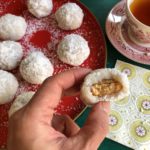
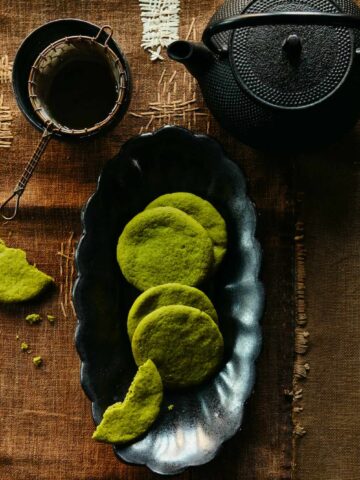
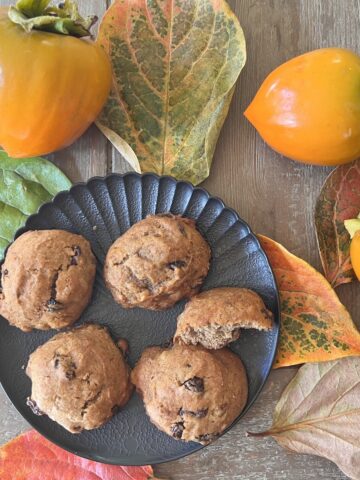
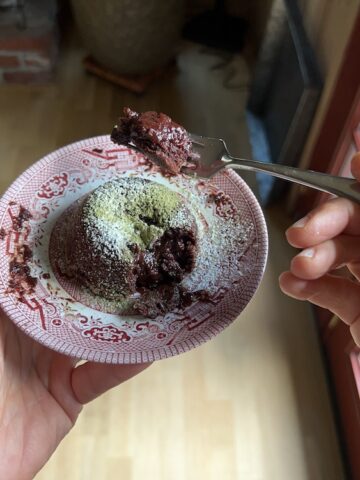

CJL says
Delicious! Recipe was easy to follow and the results of each mochi peanut ball were amazing! This recipe is a keeper and I am anxious to make it again for family and friends.
Andrea Nguyen says
Yay!!! Thank you!
Steve says
I’ve had fun adapting this recipe. A couple of tweaks I’ve done is using full fat coconut cream, 17-18 grams of fat,cutting the sugar to 125-150 grams and toasting the coconut lightly.
I took your suggestions and have used peanuts, almonds, sesame and sunflower seeds .
For sweeteners I’ve used honey, maple syrup and date syrups.
I have an idea for using pistachios and perhaps pomegranate molasses. I like making a batch with two different nut fillings , that way you don’t know what you get until you bite into one.
Thanks for the great recipe!
Andrea Nguyen says
This is fabulous, Steve! I love how you experimented with the fat content, sweeteners and nuts and seeds. It's an easy recipe for manipulate. Thank you so much for sharing.